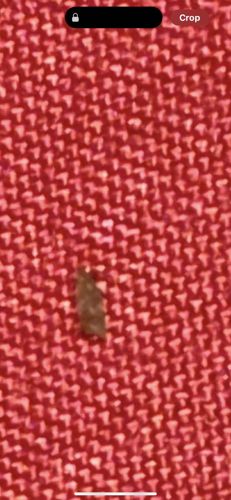Moth
Scientific Name: Unknown (too blurry to identify to species)
Order & Family: Lepidoptera (Moths and Butterflies)
Size: Varies greatly, from a few millimeters to several inches (e.g., hawk moths). The specimen appears to be small, likely under an inch.

Natural Habitat
Varies widely by species; many are found in gardens, forests, grasslands, and even indoors, especially pantry moths or clothes moths.
Diet & Feeding
Adult moths often feed on nectar from flowers, fruit juices, or don't feed at all. Larvae (caterpillars) have diverse diets, including leaves, wood, fabric, stored grains, and other organic matter.
Behavior Patterns
Moths are typically nocturnal, attracted to lights at night. They undergo complete metamorphosis (egg, larva, pupa, adult). Mating and egg-laying usually occur at night. Larvae are often the destructive stage, feeding on specific host materials.
Risks & Benefits
Risks: Some moth larvae can be significant pests of agriculture (e.g., corn earworm), stored products (e.g., Indian meal moth), or fabrics (e.g., clothes moth). They can cause damage to crops, food, and textiles. Benefits: Adult moths are important pollinators for many plants, especially nocturnal flowering species. They are also a food source for various animals, including bats, birds, and spiders.
Identified on: 9/4/2025